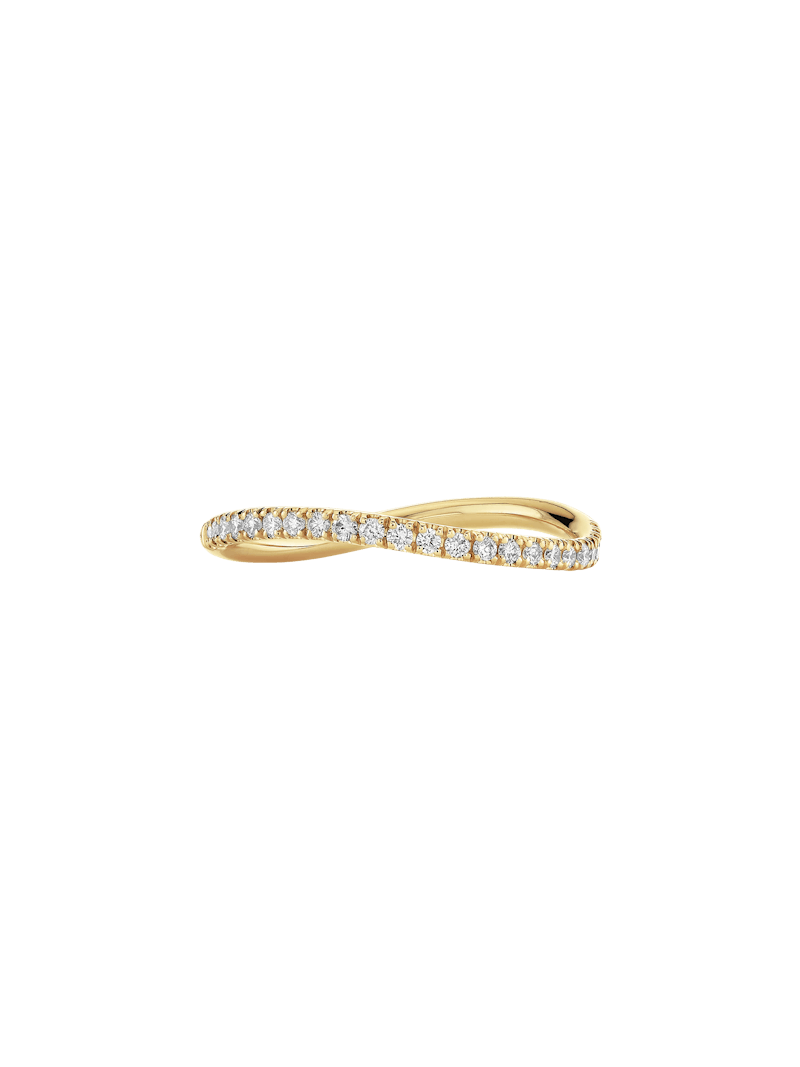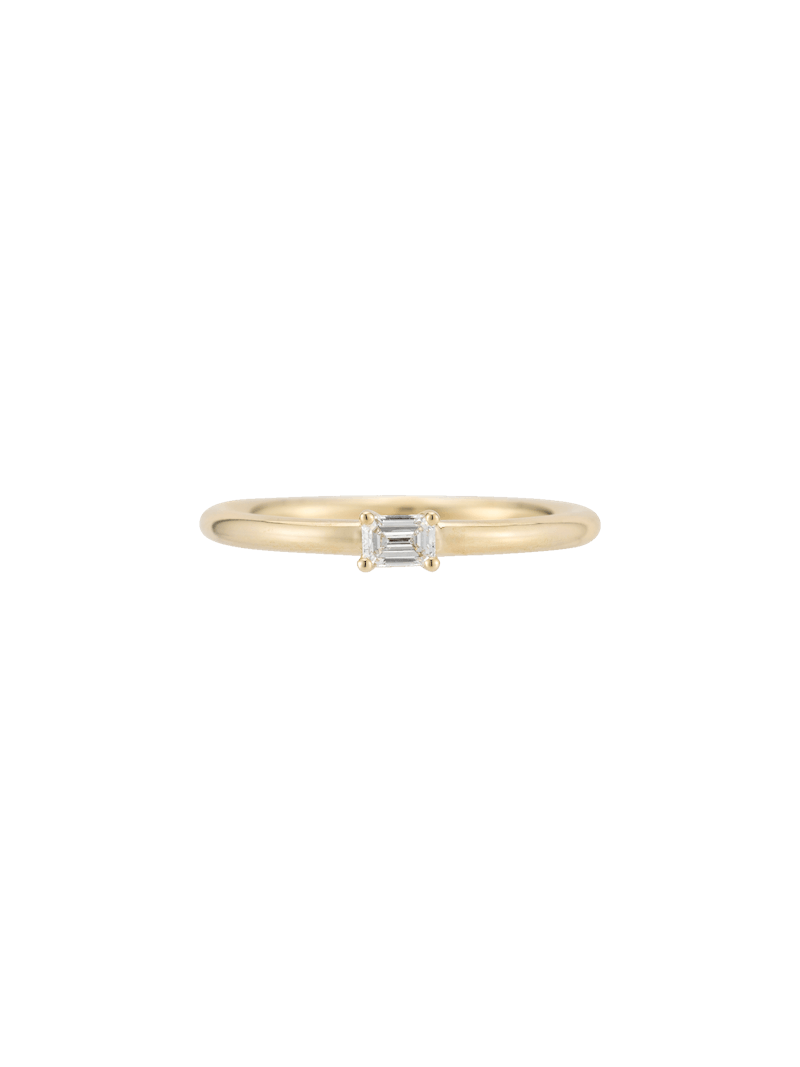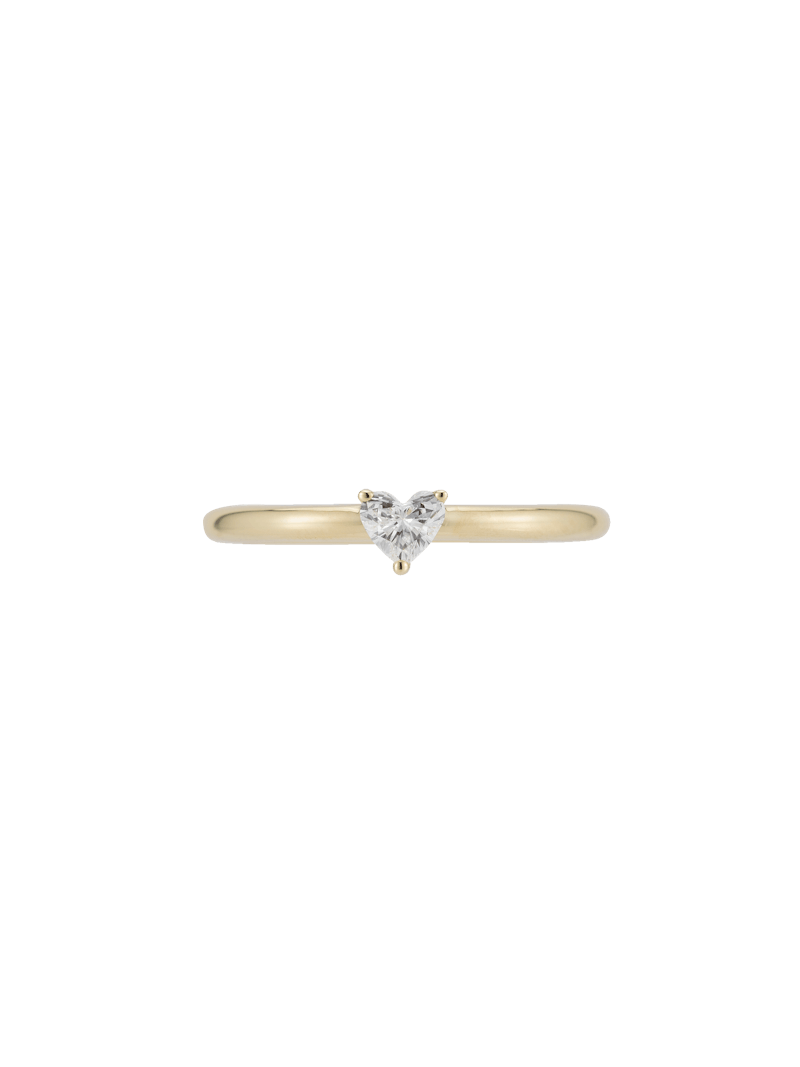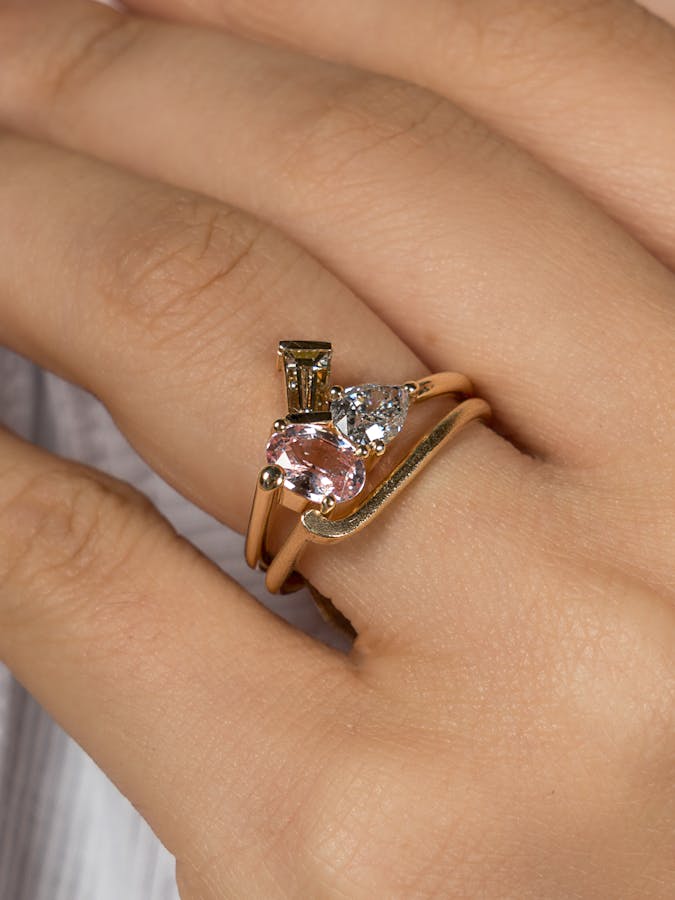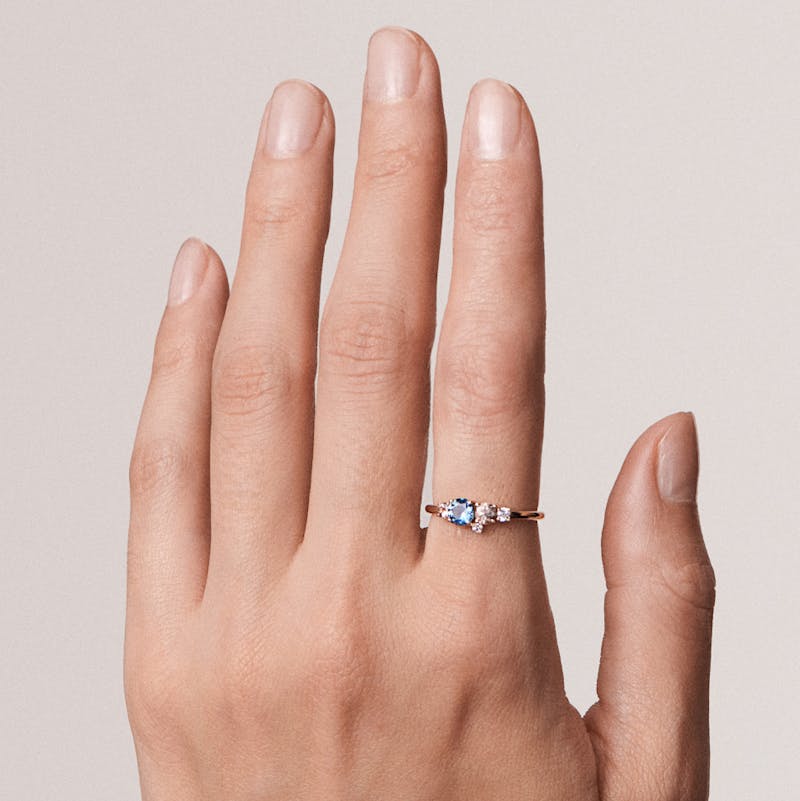The 4 Cs of diamonds
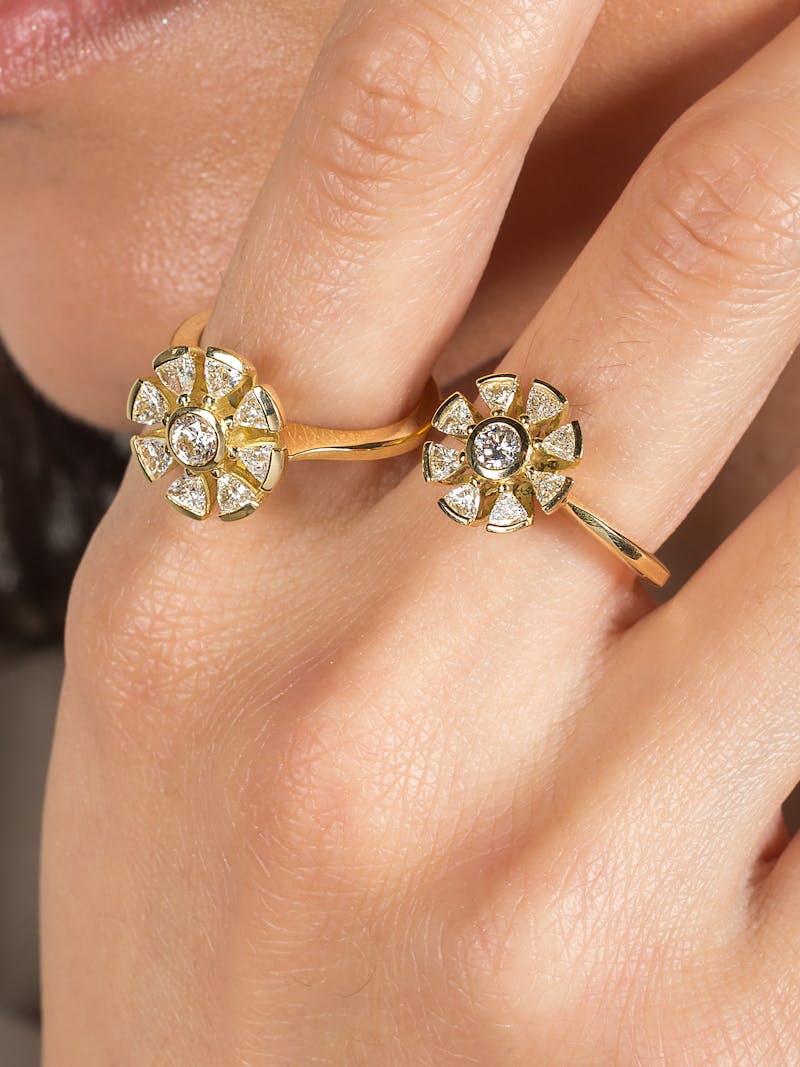
Are you looking for an engagement ring? Are you slightly confused about where to start? We have a handy guide to get you started.
If you’ve already thought about what gemstones you want in your engagement ring, congratulations! You’re one step closer to getting the perfect ring of your dreams.
While there are many different options and you shouldn’t feel pressured to buy a diamond engagement ring, if diamonds are what you’re after, it’s a good idea to learn a bit about them, and what you want to prioritise in your purchase.
You’ve probably already heard mention of ‘the 4Cs’ - and these really form the basis of what you need to know about diamonds. Let’s dive in.
What are the 4Cs?
We can thank the GIA (The Gemological Institute of America) for the 4 Cs. The Institute came up with a grading system that determines diamonds’ quality and value. The 4 Cs are recognised all over the world, so no matter where you’re based or where you buy your engagement ring from, it’s worth knowing what they mean.
Carat
This measures the weight of your diamond.
200 milligrams = 1 carat
Carat shouldn’t be confused with size, which is measured in millimetres.
It’s also worth noting carat have a point system.
50 point = 0.5 carat
100 points = 1 carat
500 points = 5.0 carat
Recommendation: Unlike common belief, carat does not determine how big a diamond actually is. Two diamonds with the same carat – weight – can have different size. So we’d recommend to not get too hung up on the carat of the diamond and focus instead on the size perception, as well as the other 3 Cs, which are more important when it comes to the quality of the gemstone.
Carat weight is one of the main price drivers of a diamond. But we think you’re better off focusing on quality - you could get a 5 carat diamond for a few pounds, but it would probably be brown or grey and so heavily included – see clarity below – that you would not be able to see through it.
Clarity
Most diamonds have imperfections, and these, referred to as ‘inclusions’, will determine the gemstone’s clarity.
The GIA has a clarity chart and once you know what it is, it won’t be as confusing as it initially sounds.
FL are Flawless. This means there are no inclusions when looking at the stone with a 10x magnification.
IF are Internally Flawless diamonds and, like FL, show no blemishes under 10x magnification, but they can have inclusions on the surface. These can potentially be removed by a lapidarist, but not always.
VVS1/ VVS2 or Very Very Slightly Included have inclusions that are difficult to see under 10x magnification.
VS1/ VS2 have small or minor blemishes that trained professionals will be able to spot under 10x magnification.
SI1/ SI2 are Slightly Included gemstones have noticeable inclusions under 10x magnification.
SI3 Is not a GIA grade but the European Gemmological Laboratory (EGL) does recognise it as being between an SI2 and a I1.
I1/ I2/ I3 are included diamonds. They have obvious blemishes under 10x magnification, and this can affect transparency.
Pique or PK diamonds are diamonds with inclusions you will be able to see without magnification.
Recommendation: Use the “eye clean” system to know which diamond to buy for your engagement ring. “Eye clean” means the diamond will be “clean” to the naked eye, without any kind of magnification. It’s relatively easy to find VS2 or SI1 diamonds which are “eye clean”. They will look great and can potentially save you a lot of money. SI2 is the grade at which you may start noticing blemishes with the naked eye, so that’s probably as low as you want to go.
Colour
The less colour a diamond has, the more valuable it is.
The GIA grades diamonds on a D to Z scale.
D/ E/ F gemstones are colourless
G/ H stones are near colourless
I/ J gems have very faint colour
K/ M diamonds have faint colour
N/R are very light colour diamonds
S/ Z gemstones have light colour
You can also get coloured diamonds, of course, which are rarer and typically more expensive. They are graded differently than colourless – or white – diamonds.
Recommendation: It’s really hard to differentiate between diamonds 3 to 4 grades apart, which is good news for you. Buying a near colourless diamond in the G/H or even I range will still look white and icy, depending on the cut.
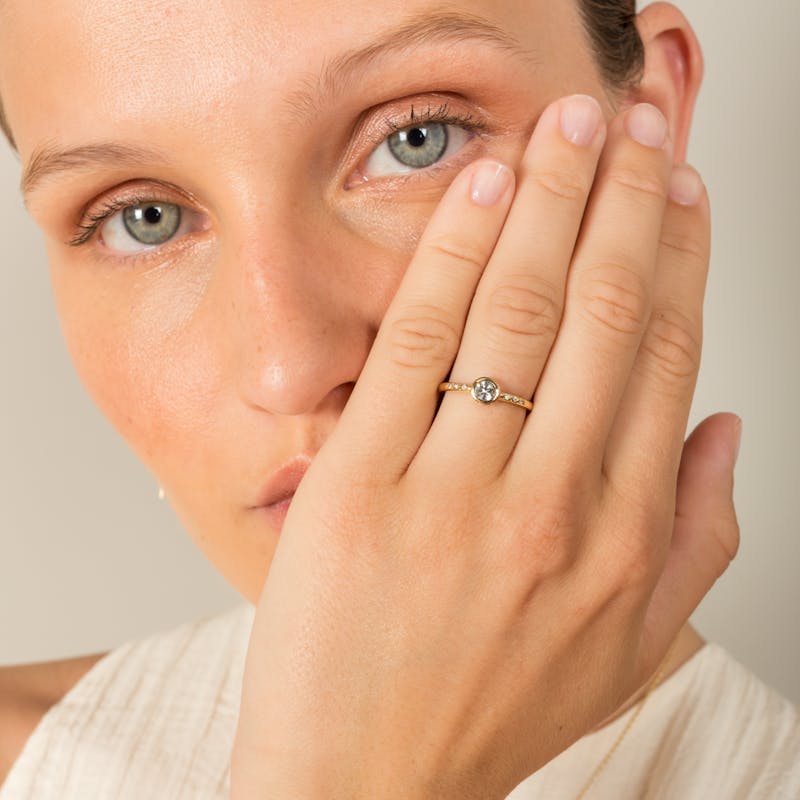
Cut
The cut of a gemstone will determine its brilliance and appearance, so this should not be overlooked. This is probably the most important of the 4 Cs. If you have to compromise on anything, cut shouldn’t be it.
The cut of a diamond shouldn’t be confused with its shape. Cut is all about how the stone’s facets reflect the light, not whether it’s oval or square.
A well-cut diamond will be perfectly proportioned to reflect the light and will be sparkling.
The cut can make a diamond sparkle or shine and is determined by the lapidarist who transformed the rough stone into the shiny diamond you will want to buy.
There are a variety of cuts, as well as gradings for diamond cut, which are self-explanatory – from excellent to poor.
A poorly cut diamond will be too deep or too shallow, which will make the light travel less than ideally through the stone.
Recommendation: If there is one C you shouldn’t compromise on, it’s the Cut. Cut will determine the overall look of the diamond and how shiny it is. Aim for an Excellent to Ideal range cut, which should ensure a great length to width ratio.
Now that you understand the 4 Cs, you can hopefully better understand your options and decide what’s the most important thing to you. If you want to chat with one of our experts to get more guidance on your engagement ring search, don’t hesitate to reach out.
